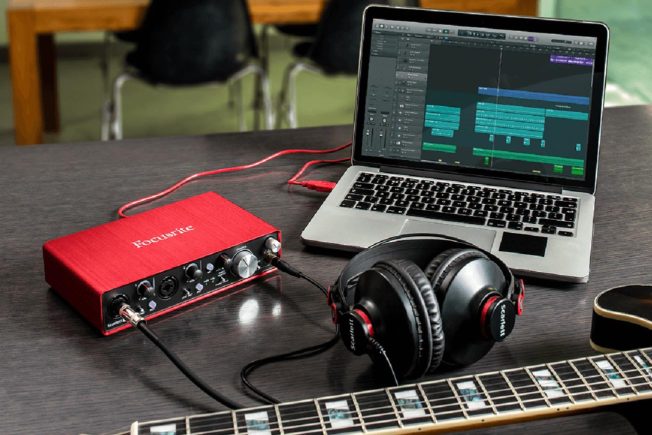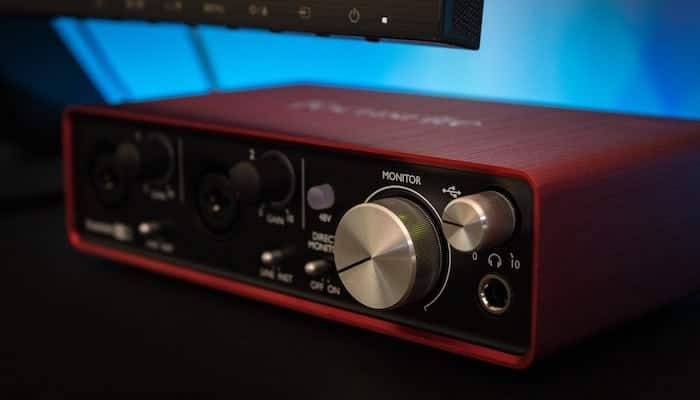Contents
Making music is more than just a simple hobby for many people. There is a range of diverse musical instruments to create enchanting musical harmony. But if you’re unable to hear the tunes effectively, how will you improve or market your music?
An audio interface for beginners and professionals alike can come in handy here. It allows high-quality recording of any audio into your computer and plays it back again. Many home and budget studios use this device to enjoy top-notch audio quality.

How does it work?
The device allows you to connect your guitar, microphone, keyboard, and other sound-producing instruments to the computer. It converts analog signals into digital ones and vice versa. Typically, the audio interface uses USB cables to connect to your computer.
You can record sound without glitches using the interface. You can listen to real-time audio or even the recorded ones using headphones or computer speakers.
Types of audio interfaces
There are two basic types:
- Rackmount audio interface is primarily used at professional recording studios. It is specialized with extra horsepower and used via a DAW (digital audio workstation) software.
- Desktop audio interface is generally used in DJ setups or for podcasting. The front part of the device has headphone jacks and audio monitor controls. It is the best audio interface for beginners as it is suitable for personal use.
What to consider when buying one?
One cannot undermine the importance of high-quality sound in music and movies alike. Likewise, music is pleasant to hear, minus the scratchy bits that can occur without proper equipment.
The following are some important audio interface features to consider for people looking to buy one.
- Number of inputs and outputs
If you plan to record using only a microphone, then one input on the interface is enough. But you also need a line-level input to record sounds from guitars and similar instruments.
Most interfaces come with an equal number of inputs and outputs. But an extra output can help hook your production to a surround setup.
- Pre-amps
They take super-low signals from the microphone and amp them up to a line level, making them suitable for recording. A high-quality pre-amp is necessary for outstanding sound production.
- Latency
Latency is the unpleasant delay between actual sound and its playback on the speakers or headphones. If latency exceeds 10ms, you will notice a considerable time gap between hitting a note on the keyboard or guitar and the sound exiting the speakers. Typically, a latency up to 3ms is negligible.
- Sample speed or rate
It means the number of times a sound is sampled to generate the digital signal. For instance, the standard sample speed of 44100 Hz means that 44100 audio wave samples or snapshots were taken each second. Ideally, for a better sound recording quality, the sample rate should be higher.
- Phantom power
48V Phantom power is used to connect condenser microphones to the computer. If you have such a microphone, you will need an interface with a phantom power switch. However, dynamic microphones can function without it.
Even budget audio interfaces offer good value for money in terms of functionality. It is vital to pick one that suits your sound recording style and needs.

Hi music fan! I am Jeff. Hope that you enjoy some stuff I shared here in my personal blog.
About myself, Currently I am in charging as Artist Manager/Music Supervisor at 72 Music Management. I did managed album to Grammy Award in 2017 with 7 Nominations from 2014-2020 and had the opportunities to work with : A.J. Croce, Blind Boys of Alabama, Bobby Rush, Dom Flemons, Dustbowl Revival, Sarah Grace
Governor of the Memphis Chapter of The Recording Academy is one of a award that I am lucky to achieved.
